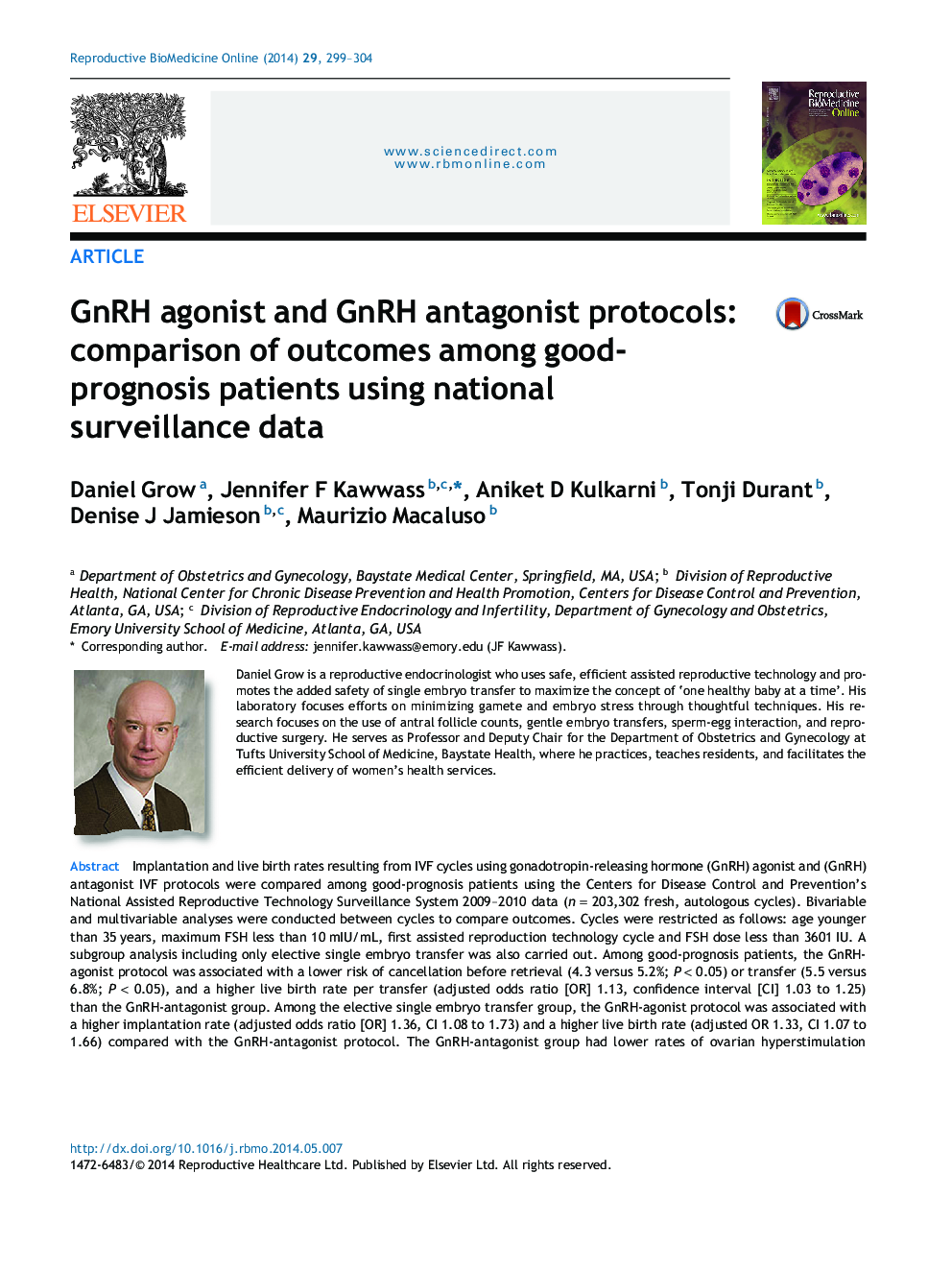| کد مقاله | کد نشریه | سال انتشار | مقاله انگلیسی | نسخه تمام متن |
|---|---|---|---|---|
| 3970119 | 1256701 | 2014 | 6 صفحه PDF | دانلود رایگان |

Implantation and live birth rates resulting from IVF cycles using gonadotropin-releasing hormone (GnRH) agonist and (GnRH) antagonist IVF protocols were compared among good-prognosis patients using the Centers for Disease Control and Prevention's National Assisted Reproductive Technology Surveillance System 2009–2010 data (n = 203,302 fresh, autologous cycles). Bivariable and multivariable analyses were conducted between cycles to compare outcomes. Cycles were restricted as follows: age younger than 35 years, maximum FSH less than 10 mIU/mL, first assisted reproduction technology cycle and FSH dose less than 3601 IU. A subgroup analysis including only elective single embryo transfer was also carried out. Among good-prognosis patients, the GnRH-agonist protocol was associated with a lower risk of cancellation before retrieval (4.3 versus 5.2%; P < 0.05) or transfer (5.5 versus 6.8%; P < 0.05), and a higher live birth rate per transfer (adjusted odds ratio [OR] 1.13, confidence interval [CI] 1.03 to 1.25) than the GnRH-antagonist group. Among the elective single embryo transfer group, the GnRH-agonist protocol was associated with a higher implantation rate (adjusted odds ratio [OR] 1.36, CI 1.08 to 1.73) and a higher live birth rate (adjusted OR 1.33, CI 1.07 to 1.66) compared with the GnRH-antagonist protocol. The GnRH-antagonist group had lower rates of ovarian hyperstimulation syndrome. Among good-prognosis patients, agonist protocols decreased cancellation risk and increased odds of implantation and live birth. Antagonist protocols may confer decreased risk of hyperstimulation.
Journal: Reproductive BioMedicine Online - Volume 29, Issue 3, September 2014, Pages 299–304